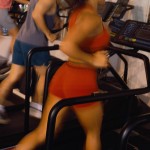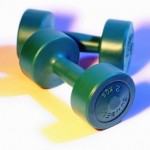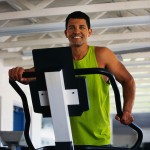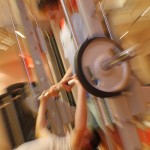 So you’re ready to join a gym, but which one? There really is a workout location for every personality from big health clubs to small private personal training studios. However, it may be so overwhelming it is difficult to know where to begin. Begin with what you want in a workout facility. The first consideration is answering the question, “what type of fitness experience do you want?” Knowing this right from the get-go will insure you actually use the facility!
So you’re ready to join a gym, but which one? There really is a workout location for every personality from big health clubs to small private personal training studios. However, it may be so overwhelming it is difficult to know where to begin. Begin with what you want in a workout facility. The first consideration is answering the question, “what type of fitness experience do you want?” Knowing this right from the get-go will insure you actually use the facility!
A larger healthy club facility will offer amenities to make your exercise experience luxurious, stocked locker rooms, maybe a pool, a wide variety of classes and instructors, as well as offering a social calendar or family focused events. A smaller studio may allow more individual attention specific to your workout goals, more private space, more control over the environment such as music, parking and changing facilities, along with less used and less crowded equipment. And there are many options in between. So which is right for you?
Atmosphere. Choosing the right atmosphere is critical when joining a facility. Remember a goal of healthy living is to decrease stress, so if you’re going to become grumpy with music blasting, you’re really defeating your purpose. Answer the following questions: Do you like to exercise when it’s quiet or do you like music? Do you like to be around others when you exercise? It’s safe to assume all workout facilities will be busy in January. Most people are able to exercise before work hours, about 5am until 8am and then again after work hours, about 5pm until 8pm. If the facility you’re considering offers childcare, assume it will be busy during those hours as well. So, if you’re one who likes to exercise alone, make sure you can exercise in the afternoon hours where you’ll have more space all to yourself or choose a smaller facility with fewer members and less traffic in general.
Equipment. What’s the primary equipment you’ll use? Large facilities will have lots of options making having to wait for equipment a non-issue. However, if you’re working toward a particular goal or event, a smaller facility run by Fitness Professionals will allow you space and resources to be as specific as you need and require.
Amenities. Will you need access to changing facilities? Do you need childcare services? Will you bring your own towel or do you prefer to pick up one there and then leave it as you exit? Would you like food and drinks available for purchase? Is paid parking or simply adequate parking a consideration? Are you interested in a health club social scene like seminars, outdoor or off-site workouts or weekend social gatherings? Do you want a space to lounge and chat before and after your workout? A larger health club in many cases offers social activities and they often have food available. Smaller locations may have limited showers and changing facilities, both important considerations if you’re on a tight timeline pre and post workout.
Classes. Do you like the social aspect of working out? Do you like the variety a group fitness schedule offers? Do you like a rotating schedule of classes? If you are not interested in a group workout and are happy doing a solo workout, choosing a location that doesn’t offer classes may be more economical.
Getting what you want out of your exercise experience, means you need to be clear on what kind of exercise experience you want! It’s your healthy living plan, so make it work for you.
 Subscribe
Subscribe


